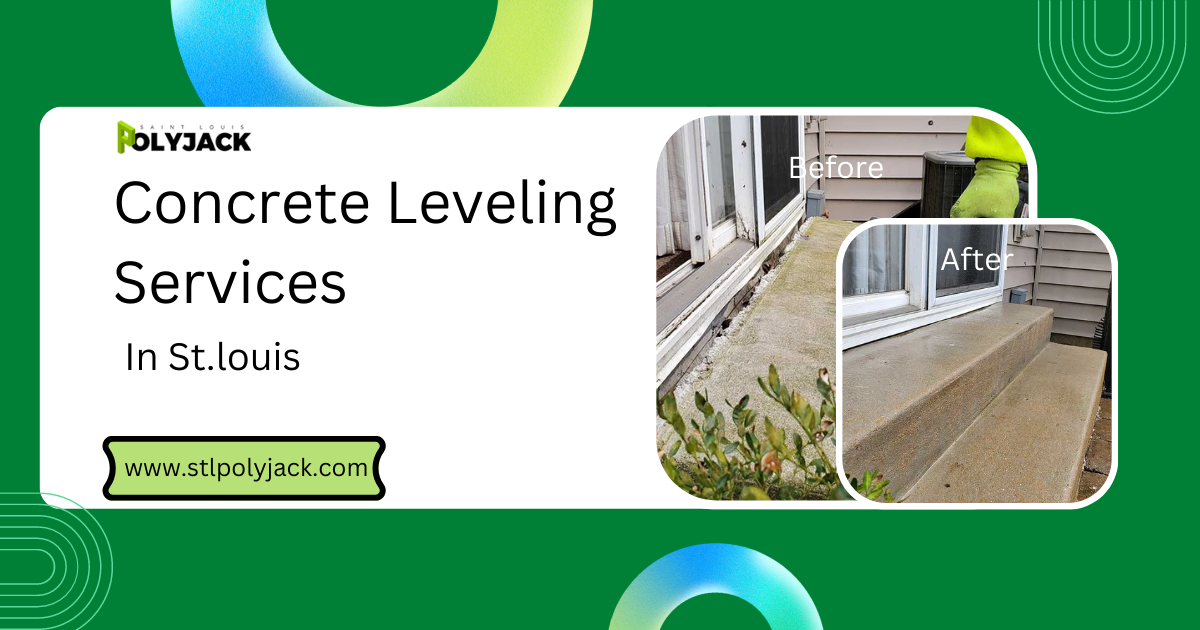Concrete is one of the most durable and widely used building materials, but even the strongest surfaces can develop cracks over time. These cracks may seem like minor issues at first, but if left unaddressed, they can lead to more significant structural problems and costly repairs. Whether you’re dealing with a driveway, patio, or foundation, understanding how to identify and fix cracks in your concrete surfaces is essential. In this guide, we’ll walk you through the steps to properly assess and repair cracks, with a special focus on Concrete Leveling in St. Louis.
1. Understanding the Types of Concrete Cracks
Before you can effectively fix a crack in your concrete, it’s important to understand what type of crack you’re dealing with. Here are some common types of concrete cracks:
a) Hairline Cracks
Hairline cracks are very thin and often appear shortly after the concrete has been poured. They are typically caused by shrinkage as the concrete dries. While hairline cracks are usually not a structural concern, they can allow moisture to seep in, potentially leading to further damage.
b) Shrinkage Cracks
Shrinkage cracks occur as concrete hardens and loses moisture. These cracks are common in slabs and can appear within a few days of pouring. They are usually shallow and pose minimal structural risk.
c) Settlement Cracks
Settlement cracks occur when the ground beneath the concrete shifts or settles. These cracks can be more serious as they may indicate underlying soil problems. Settlement cracks often run vertically and can vary in width.
d) Structural Cracks
Structural cracks are the most serious type and can indicate significant underlying issues. These cracks are typically wider and may run horizontally or diagonally across walls or foundations. If you suspect a structural crack, it’s important to consult a professional immediately.
2. Assessing the Severity of the Crack
Once you’ve identified the type of crack, the next step is to assess its severity. The width, length, and depth of the crack will determine the appropriate repair method.
a) Width
-
Less than 1/8 inch: These small cracks can often be repaired with simple surface treatments.
-
1/8 inch to 1/4 inch: Moderate cracks may require more intensive repair methods, such as injecting epoxy or using a concrete patch.
-
More than 1/4 inch: Large cracks may indicate structural issues and should be inspected by a professional.
b) Length
-
Short cracks can often be treated locally, but longer cracks may require a more comprehensive approach.
c) Depth
-
Shallow cracks are easier to repair, while deep cracks may require filling and reinforcing to ensure they don’t spread.
3. How to Fix Concrete Cracks
a) Surface Cracks
For minor surface cracks, the repair process is relatively straightforward:
-
Clean the Crack: Start by cleaning out the crack with a wire brush or a pressure washer to remove dirt, debris, and loose concrete. This will ensure that the repair material adheres properly.
-
Apply a Concrete Repair Caulk: For hairline cracks, a concrete repair caulk or filler is often sufficient. Simply apply the caulk along the length of the crack and smooth it out with a putty knife.
-
Seal the Crack: Once the repair material has dried, apply a concrete sealer to protect the surface from moisture and further damage.
b) Deep Cracks
For deeper cracks, a more involved repair is necessary:
-
Widen the Crack: Use a chisel and hammer to widen the crack slightly, creating a V-shape. This will allow the repair material to penetrate deeper into the crack.
-
Fill with Epoxy or Polyurethane: Inject an epoxy or polyurethane foam into the crack. These materials expand as they cure, filling the crack completely and creating a strong bond.
-
Smooth and Seal: After the filler has cured, smooth the surface with a trowel and apply a sealer to prevent moisture infiltration.
c) Structural Cracks
If you suspect a structural crack, it’s best to consult with a professional specializing in concrete leveling in St. Louis. Structural cracks often require extensive repairs, such as underpinning or slab jacking, to stabilize the foundation and prevent further damage.
4. Preventing Future Cracks
Preventing cracks from forming in the first place is always better than having to repair them later. Here are some tips to help prevent future concrete cracks:
a) Proper Installation
Ensure that your concrete is installed correctly with adequate reinforcement, proper curing, and appropriate control joints to manage shrinkage and movement.
b) Regular Maintenance
Regularly inspect your concrete surfaces for early signs of wear and tear. Seal the surface every few years to protect against moisture and freeze-thaw cycles.
c) Soil Management
If you’re in an area like St. Louis, where soil movement is common, consider soil stabilization techniques to prevent settlement cracks. Concrete leveling, also known as slab jacking or mudjacking, can be used to lift and stabilize uneven slabs, preventing cracks from forming.
Conclusion
Cracks in your concrete surfaces are not just unsightly; they can also lead to more serious issues if left untreated. By understanding the different types of cracks and how to repair them, you can maintain the integrity of your concrete and avoid costly repairs in the future. If you’re dealing with significant cracks or suspect underlying issues, consider consulting a professional specializing in Concrete Leveling in St. Louis. With the right approach, you can keep your concrete surfaces looking great and performing well for years to come.

